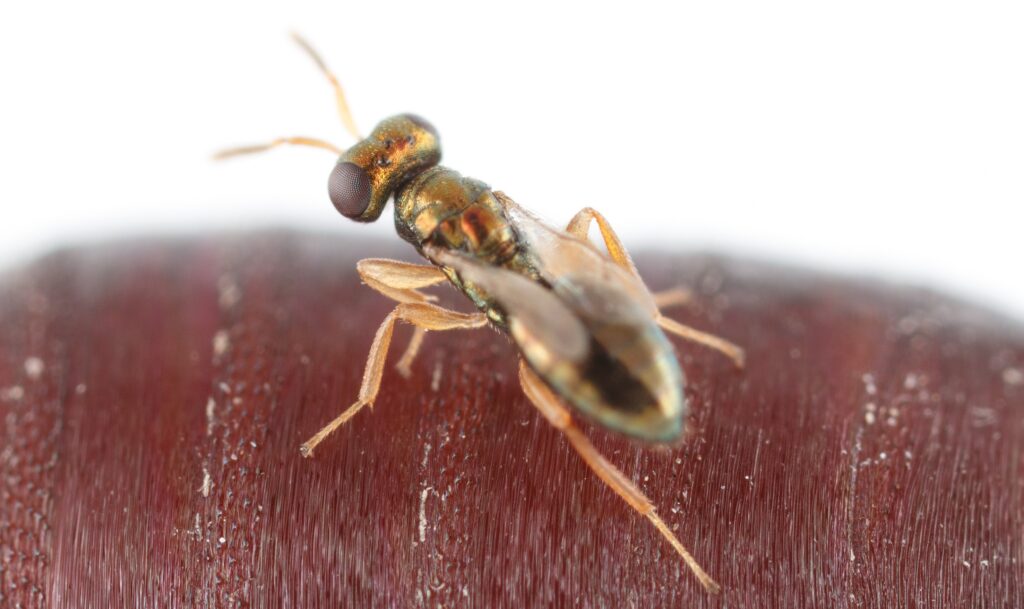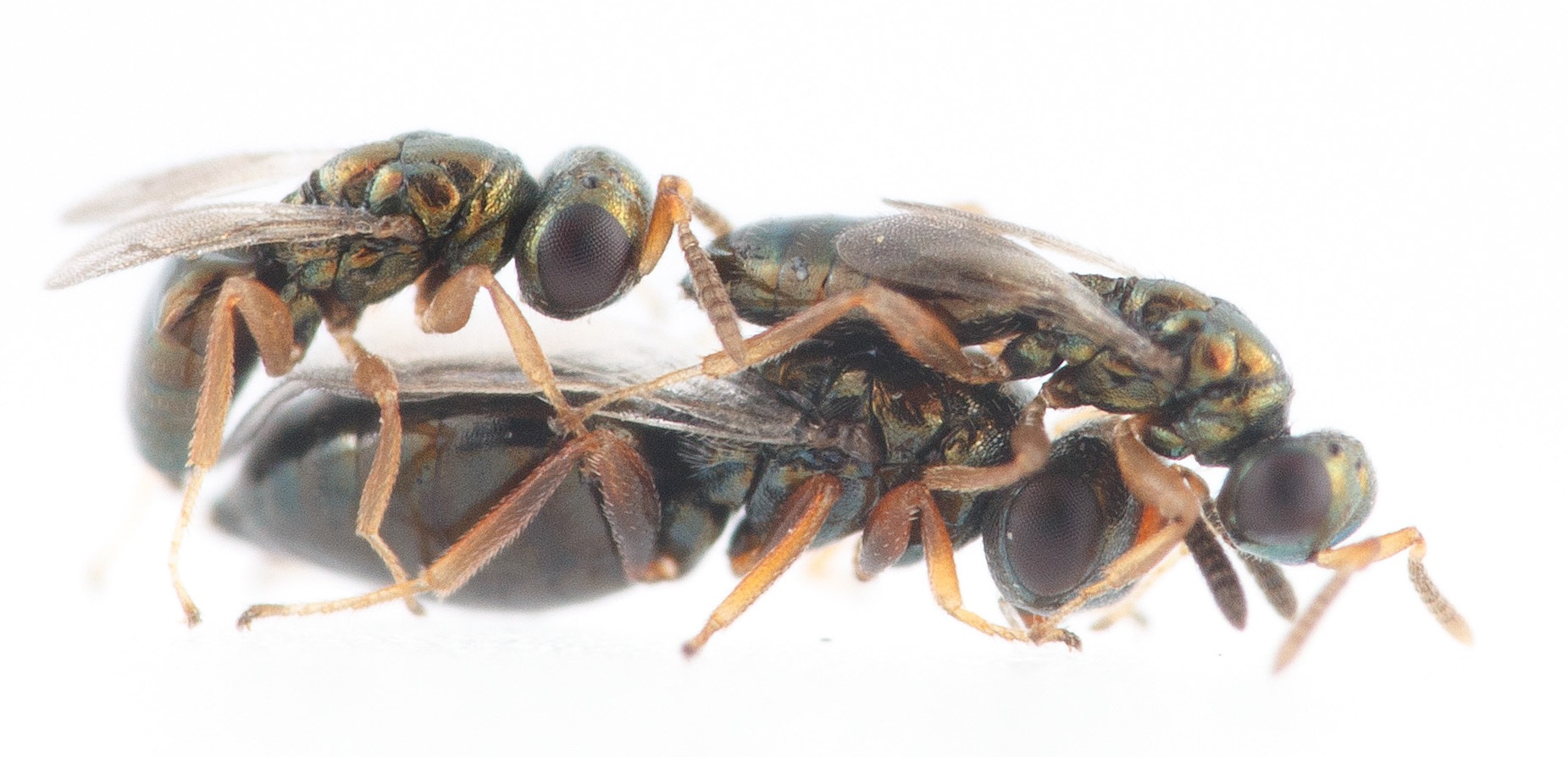Insects don’t talk. They send each other chemical messages. Their mating rituals are teeming with such messages, very similar to that of humans. Entomologist Eveline Verhulst and her group investigated what gene is key in the definitive part of that language of chemistry: Doublesex.
Verhulst has been studying the crucial role Doublesex plays in the lives of parasitic wasps. This gene regulates the sexual differentiation of the offspring. Odour in the form of pheromones plays an important part in the mating process. Therefore, it is logical to assume that Doublesex also regulates the production of pheromones and other sex-related odours.

That assumption is correct, a series of experiments shows. Doublesex regulates the Nasionia vitripennis wasp’s pheromone system in three different ways. This was shown by simply switching off the gene in the males. This causes the creatures to lose their attractiveness and their ability to make the female receptive to their advances.
Attraction
The attraction in wasps rests on two separate systems: remote attraction and close-range recognition. The remote pheromones are volatile substances that are secreted through the wasp’s lower body. The close-range pheromones are oily hydrocarbons on the animal’s skin. The latter prompts the males into courting.
When Doublesex is switched off, the males barely produce either of these two pheromones. This not only renders them unattractive, but it also thwarts their ability to make the female receptive to their advances. Worse still, untreated males perceive the treated males as female. Doublesex feminises males when switched off.
Male odour
Chemical analysis revealed the main ingredient of the ‘perfume’: an alkene with the code name Z9C31. Administering Z9C31 to the ‘faulty’ males restores their male odour. Asif they were doused in Axe, Verhulst clarifies, albeit to repel males instead of to attract females.
Why female wasps do not respond to the advances of ‘faulty’ males is not yet clear. Verhulst suspects that Doublesex also stimulates the production of lust-enhancing substances (aphrodisiacs) that make females receptive to mating. Attempts to find that substance have remained unsuccessful to date.

 A female parasitic wasp and two males. One of the males attempts to spread its aphrodisiac near the female’s head. The other awaits the female’s receptiveness to make its move. Photo: Jitte Groothuis.
A female parasitic wasp and two males. One of the males attempts to spread its aphrodisiac near the female’s head. The other awaits the female’s receptiveness to make its move. Photo: Jitte Groothuis. 

